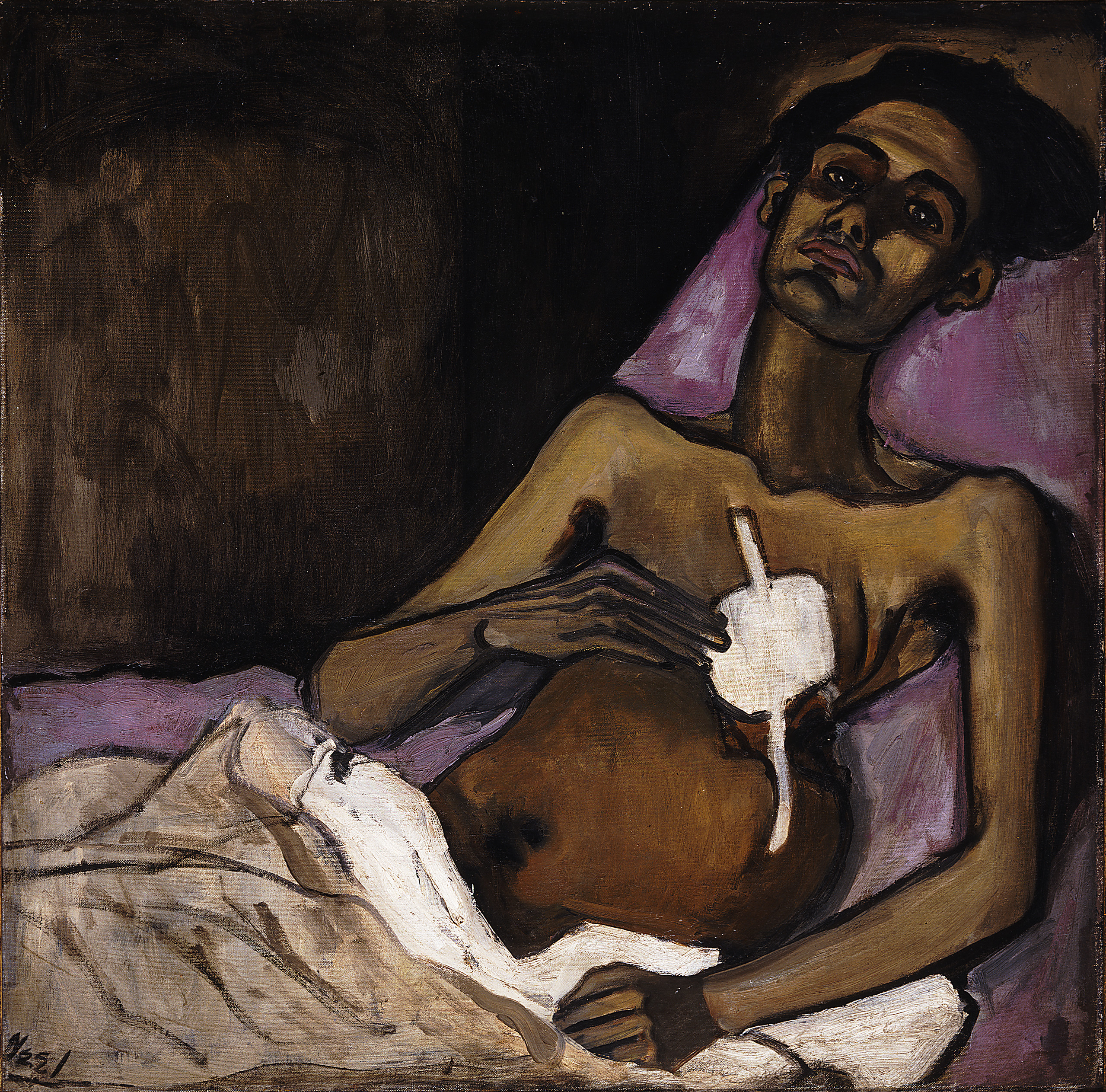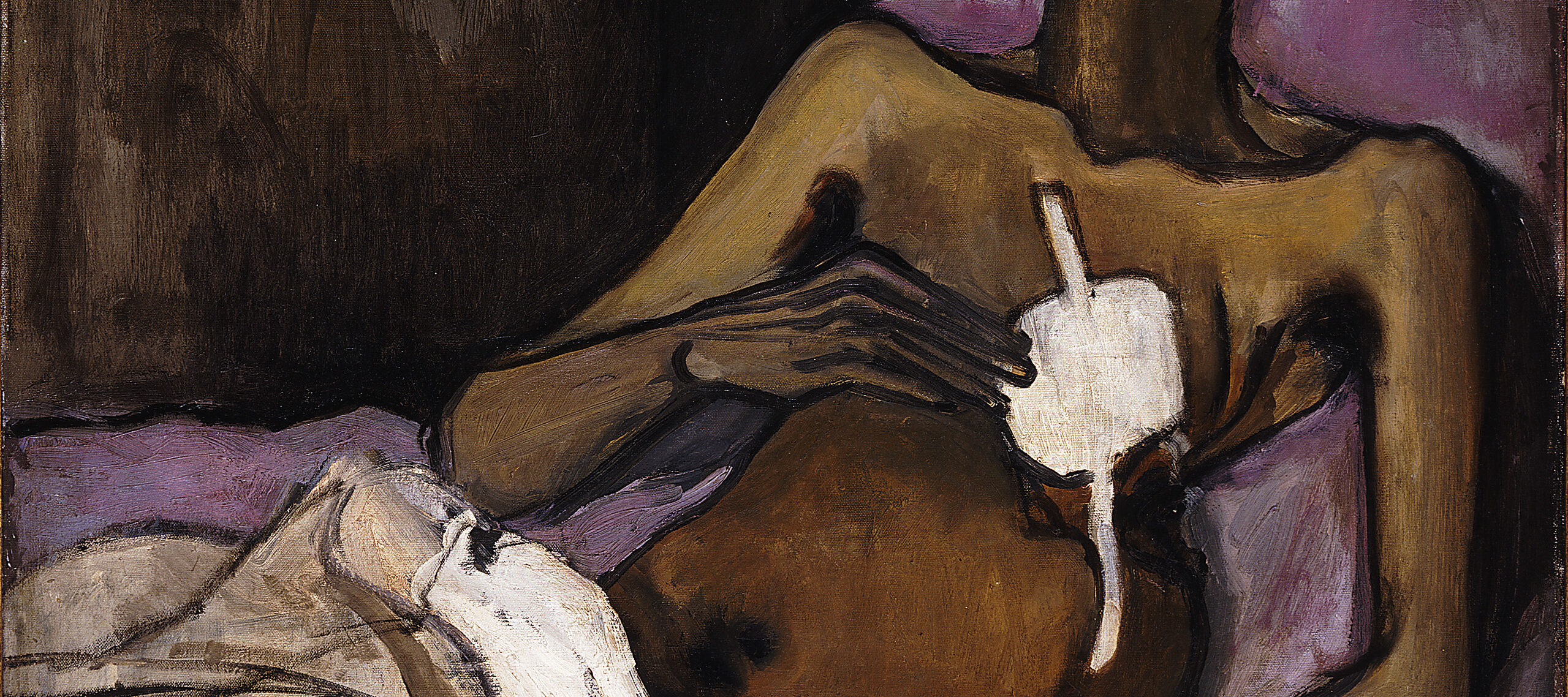In a gallery titled “The Human Comedy,” in the exhibition Alice Neel: People Come First at the Metropolitan Museum of Art, is a painting on loan from the NMWA collection, Neel’s T.B. Harlem (1940). The exhibition’s title comes from a quote by Neel (1900–1984), an artist who dedicated herself to the depiction of individuals, saying, “I have tried to assert the dignity and eternal importance of the human being.” Her commitment to portraying all aspects of humanity—frailty as well as strength—is distilled in this gallery, where T.B. Harlem hangs near a portrait of Neel’s dying mother, her candid portrait of a half-nude Andy Warhol, and the sardonically titled Well Baby Clinic (1928–1929), among other emotionally charged works. The exhibition text notes,
“Neel often invoked the title of Honoré de Balzac’s compendium of writings, The Human Comedy, which examines the causes and effects of human action on nineteenth-century French society. [In] 20th-century New York, Neel sought to bring Balzac’s spirit to bear on her own historical moment, documenting episodes of suffering and loss, but also strength and endurance, with unsparing candor and acute empathy.”

T.B. Harlem
The painting depicts Carlos Santiago Negrón, the brother of José Santiago Negrón, who was the father of Neel’s third child and a Puerto Rican musician. Carlos is portrayed recuperating from thoracoplasty, a painful tuberculosis treatment used at the time to collapse and “rest” the infected lung by removing ribs. Only 24 at the time of the painting, Carlos survived the procedure. While tuberculosis was a widespread disease in the 19th century, by the 20th it disproportionately affected working-class communities of color, particularly in cities. At the time, Neel was living in Spanish Harlem, a culturally rich area with a growing Puerto Rican population, but where living conditions were often close and buildings lacked critical infrastructure, leading to unhygienic circumstances.
The suffering Carlos, depicted by Neel in dark, somber colors, has been likened to a martyr, due to his personal travails and the symbolism of his pose. His hand gestures to his wound, a common iconographical device in Renaissance religious imagery, recalling the resurrected Christ displaying the spear gash in his side. Neel’s work is peppered with such purposeful art historical references.
Were she alive today, Neel would undoubtedly be an activist, as she was during her lifetime, for members of marginalized communities whom the wheels of capitalism often crush. Through her art, Neel captured the pathos of her sitters using unblended brushstrokes and expressive colors. She painted portraits at a time when abstraction reigned, and only in recent years has gained wider recognition for her impact on 20th-century art. This exhibition rightly claims Neel as one of the most radical painters of her time.
Alice Neel: People Come First is on view at the Metropolitan Museum of Art, New York City (through August 1, 2021); Guggenheim Museum Bilbao, Spain (September 17, 2021–January 23, 2022); and the Fine Arts Museums of San Francisco (March 12–July 10, 2022).
